How to Clean a Washing Machine for Fresher Laundry

You know you should learn how to clean a washing machine, but shouldn’t it already be clean since that’s its job? Well, wherever there’s moisture, there’s a need to clean.
Learn how to clean your washing machine the right way so mold, mildew, soap scum, mineral deposits, and other organisms and smells don’t give you the laundry day blues.
Our guide gives you methods to clean your machine, whether it’s a top-loading or front-loading model or an older or newer high-efficiency (HE) model.
Why Your Washing Machine Gets Dirty
Your washing machine will inevitably get dirty over time. Just pull back the gasket (the rubber piece around the perimeter of the door opening) on a front-loading washing machine or look under the lid of your top-loading washer and you’ll see just how filthy it becomes!
There are four reasons this happens:
- Detergents and other products, such as petroleum-based fabric softeners, build up in the machine’s inner workings to produce slimy soap scum.
- Food and other dirt particles that were washed off of clothing may stick to this slime and not get rinsed out of the washer.
- The inside of your machine is rarely dry and the moist, warm environment becomes a breeding ground for mold and mildew.
- Hard water build-up and minerals can clog the inner workings of your machine.
According to Doc’s Appliance Service, the detergent you are using also may be causing an odor in your washer. If you are using regular detergent in a HE washer, you’re creating too many suds that won’t fully rinse out, attracting mold and mildew throughout the washer. If you have an HE washer, change over to HE detergent that is specifically designed to suds up less, reducing the build-up and odors.
Photo via Adrienne Carrie Hubbard | Crafty Little Gnome
How often do washing machines need to be cleaned?
Most owner’s manuals will let you know how often to clean your washing machine, but on average, you should clean it every six months. Sometimes, you know it’s time to clean your washing machine if you smell a musty odor when you open the door.
According to The Home Depot, deep cleaning your washing machine every few months will keep your appliance in top shape and extend its life and efficiency.
Photo via Nicole Burkholder
How to Clean Top-Loading Washing Machines
Although top-loading washing machines don’t get as musty as front loaders (we’ll explain why in a bit), they should still be cleaned regularly. There are two methods to cleaning a top-loading washing machine: one with white vinegar and baking soda, and another with bleach.
How to Clean Top-Loading Washing Machine With Vinegar and Baking Soda
A powerhouse combo for any cleaning job, vinegar and baking soda eliminate soap scum and water mineral build-up in a top-loading washing machine.
Tools and Materials Needed:
- 4-5 cups white vinegar
- Drying towel
- ½ cup baking soda
- Soft-bristled brush
- Sponge or microfiber rag
- Paper towels
- Protective gloves
1. Empty the Washer
Empty and dry the washing machine’s tub.
2. Wipe Down the Tub
Pour vinegar onto a sponge or cloth and wipe down the inside of the washing machine’s tub. Let it dry for a minute and then wipe with a towel.
3. Clean the Agitator
If your machine has an agitator, it can collect a lot of debris and grime over time. Remove what parts you can to get into the agitator, dip a soft-bristled brush into vinegar, and use it to scrub the agitator. Wipe down the agitator with paper towels or a towel to remove more grime.
4. Clean the Lid and Trays
Pour more vinegar onto a sponge or cloth and wipe down the inside of the lid and in and around the detergent trays. Let it dry for a minute and then wipe with a towel. Concentrate on all the nooks and crannies in your lid where debris can hide, like around the door hinges.
5. Choose the Setting
Select the hottest and largest load setting on your washer.
6. Add Vinegar
Add four cups of vinegar into the washer as it fills with water. Start and agitate the cycle for a few seconds to mix the water and vinegar, then stop the cycle. Let the vinegar sit and soak in the tub for about a minute.
7. Add Baking Soda
Add ½ cup of baking soda and resume the cycle for a few seconds to mix the baking soda into the water. Let the mixture sit and soak for 30 to 60 minutes.
8. Finish the Cycle
Complete the cycle and repeat if necessary.
How to Clean Top-Loading Washing Machine With Bleach
Bleach has likely made its way into your washing machine at some point to help whiten your clothing, towels, and bedding. Bleach will also kill mold, mildew, and germs that live inside the washer.
Tools and Materials Needed:
- Rubber cleaning gloves
- ½ to 1 cup of bleach
- Soft-bristle brush
- Sponge or microfiber rag
- Paper towels (optional)
- Protective gloves
1. Empty the Washer
Empty and dry the washing machine’s tub.
2. Wipe Down the Tub
Put on rubber cleaning gloves. Pour bleach onto a sponge or cloth and wipe down the inside of the washing machine’s tub. Let it dry for a minute and then wipe with paper towels.
3. Clean the Agitator
Remove what parts you can to get into the agitator and dip a soft-bristled brush into bleach and scrub the agitator. Wipe down the agitator with paper towels to remove more grime.
4. Clean the Lid and Trays
Pour more bleach onto a sponge or cloth and wipe down the lid and trays. Let it dry for a minute or wipe with paper towels. Concentrate on all the nooks and crannies in your lid where debris can hide.
5. Choose a Setting
Select your washer’s normal setting with warm water plus a rinse cycle.
6. Add Bleach in Two Places
Add ½ cup of bleach to the detergent department of your washer. Also, add bleach into the bleach compartment of your washer.
7. Run the Washing Machine
Finish one entire cycle.
Substitute for Bleach
Photo via Chelsea @ Making Manzanita
How to Clean Front-Loading Washing Machine
Front-loading machines tend to get smellier over time because water pools in the doorway and creates a moldy odor. That’s the only difference you will note when cleaning this type of washer, except the filters may be in different places (which we’ll explain more below under “How to Clean a Washing Machine Filter”).
For a front-loading machine, it’s best to use two cycles, one with bleach and one with vinegar.
Tools and Materials Needed:
- 2-3 cups white vinegar
- Small pail
- Microfiber cloth or sponge
- 2 cups bleach
- Towel or paper towels
- Protective gloves
1. Empty the Washer
Empty and dry the washing machine’s tub.
2. Wipe Down the Tub
Mix one part vinegar to one part water in a small pail. Dip a sponge or cloth into the mixture and clean the inside of the washing machine’s tub. Let it dry for a minute then wipe with a towel or paper towels.
3. Clean the Door and Trays
Dip a cloth into the vinegar and water mixture. Clean the inside of the door, pull back the gasket so you can clean underneath it, and wipe the inside tub rim with the cloth. Gently scrub, then rinse with water and wipe it dry with a towel or paper towel. Do the same with the detergent trays.
Tray Cleaning Option
4. Run a Vinegar Cycle
Add two cups of vinegar to your washer (either directly into the drum or into the detergent tray) and run a cycle on the hottest setting.
5. Run a Bleach Cycle
After the vinegar cycle, run another cycle with bleach. Add two cups of bleach into your washer (either directly into the drum or into the detergent tray) and run a cycle on the hottest setting.
Bleach Wipe for Door
Photo via Chelsea @ Making Manzanita
How to Clean a Washing Machine Filter
Luckily, you know how to remove the lint from your dryer’s filter. But did you know there’s a filter on your washing machine that accumulates lint and hair? If you have an accessible filter in your washing machine, it should be cleaned every six weeks.
To find out where the filter on your machine is located, you’ll need to look in your machine’s owner’s manual unless you can spot it on your own. It could be located in any number of places, or you may not even have one. Look for the following:
- A small hatch in the bottom front of your machine (usually a front-loading machine)
- Under your agitator of a top-loading machine
- Somewhere along the top of the drum of your machine
Here, you’ll find general directions on how to clean a filter that may be located under a small hatch in the front of your machine, but the general rules usually apply to a filter regardless of its location. Consult your owner’s manual for full directions for your machine’s model.
Tools and Materials Needed:
- Shallow dish
- Towel
- Sponge
- Bucket (optional)
- Microfiber cloth (optional)
1. Open the Filter Cover
Find your filter cover, which is typically at the bottom of a front-loading machine.
2. Release the Drain Hose and Cover
Push the drain cover to release itself from where it’s “locked” in. Remove the cap from the drain hose.
3. Hold the Hose Over the Dish
Hold the open hose over your dish and water should begin to flow into the bowl.
4. Replace the Cap
Once there is no more water coming out of the hose, replace the cap and put the hose back in place.
5. Undo the Filter
Remove the cap from the filter, which should be located next to the drain hose. Take the filter housing out of its space and either bring it to a sink to clean it or clean it with a sponge over a bucket of clean water.
6. Clean and Rinse the Filter
Remove debris and dirt that’s built up in the filter’s housing. Typically, you will need to use your fingers to do this and a rag to grab clinging debris. Rinse the filter clean (either in the sink or in a bucket of clean water, depending on if you can fully remove the filter from its casing).
7. Replace the Filter and Close the Hatch
Put the filter back into its place, locking it in. Close the hatch, and you’re done.
How to Clean the Outside of Your Washing Machine
Brushing up against a dusty, sticky washing machine probably isn’t your idea of fun, so don’t forget to wipe down the exterior of your machine.
Shiny appliances can help you get through the chore of doing laundry just a wee bit better. (But if you want a great laundry day experience, maybe it’s time to redo that laundry room of yours!)
In the meantime, here’s how to spiff up the exterior of your machine.
Tools and Materials Needed:
- Few drops of gentle liquid dish soap
- White vinegar
- Water
- Bucket, bowl, or spray bottle
- Sponge
- Towel
1. Remove Dispensers
If you have any removable exterior dispensers, wash them separately with a sponge in a sink of warm water and gentle dish soap, then thoroughly dry.
2. Mix the Vinegar Solution
Make the cleaning solution by mixing one part vinegar and one part water either in a bowl or a spray bottle.
3. Apply Vinegar Mixture
Liberally sponge or spray the mixture onto the outside of your washing machine.
4. Wipe
Wipe down your washing machine using a sponge.
5. Dry
Let the exterior air dry or towel off to dry.
6. Replace Removable Parts
Put the dry removable dispenser parts back into your washing machine.
How to Keep Your Washing Machine Clean
Besides cleaning up detergent drips as they happen and regularly wiping the dust off your machine, there are a few products that can help to maintain your washer’s freshness.
- Affresh Tablets: Use these tablets to remove odor-causing residues and grime in the internal components of your washer so they don’t continue to build up. The company’s ingredient disclosure list (for washing machines) states that oxidizers cause a reaction to break down the internal build-up of minerals, grime, etc. Processing aids, a little baking soda, and fragrances are the main ingredients.
- Affresh Wipes: Use these wipes to lift residue, dirt, and dust from interior and exterior parts, such as the rubber liner, detergent tray, door glass, and all other surfaces outside your machine.
- OxiClean Washing Machine Cleaner: OxiClean products come to the rescue one more time in the laundry room to keep your machine clean. The company recommends using a pouch per week for three weeks consecutively, then switch to using a pouch once per month to maintain cleanliness. Pour the packaged ingredients into an empty washer and run it through a hot water cycle.
Have you had to battle odors and build-up in your washing machine?
Let us know how you cleaned your washing machine, either with DIY methods or great commercial products we’d all love to know about!



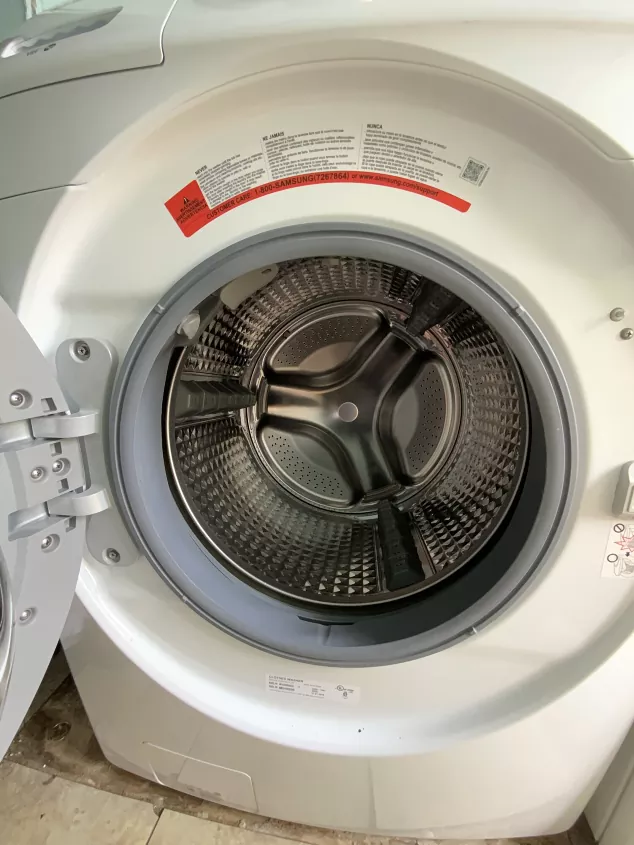



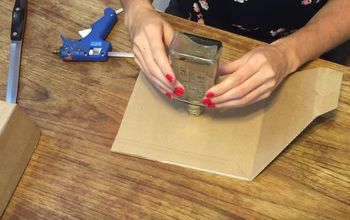
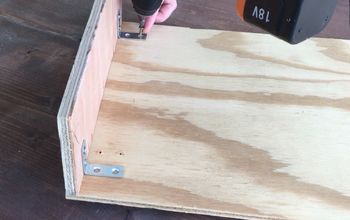



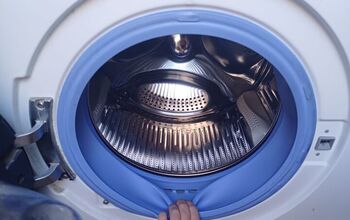
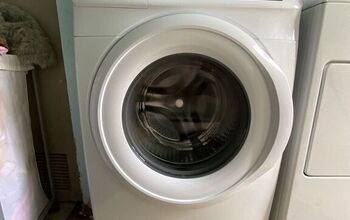
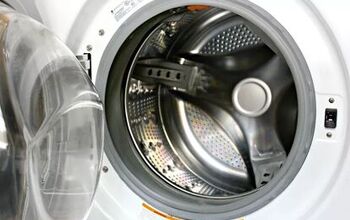



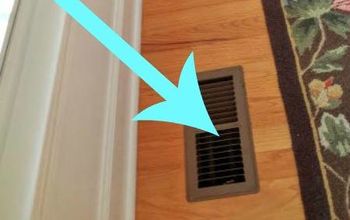



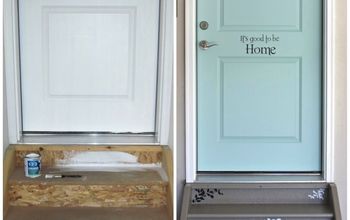


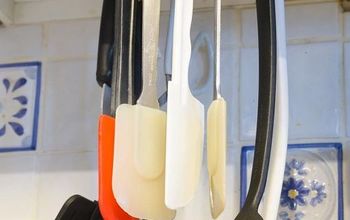

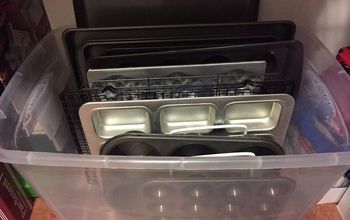


Frequently asked questions
Have a question about this project?
How do you clean the dryer?